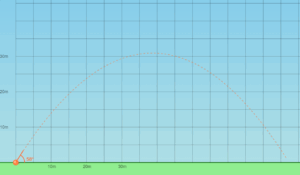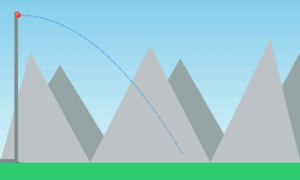Circular Motion Simulation
Example
Question:
An insect trapped in a circular groove of radius \(12\,\mathrm{cm}\) moves along the groove steadily and completes 7 revolutions in
\(100\,\mathrm{s}\).
(a) What is the angular speed and the linear speed of the motion?
(b) Is the acceleration vector a constant vector? What is its magnitude?
Solution:
This is uniform circular motion. Here \(R = 12\,\mathrm{cm}\).
The angular speed \(\omega\) is:
\[
\omega = \frac{2\pi N}{T} = \frac{2\pi \times 7}{100} = 0.44\,\mathrm{rad/s}
\]
The linear speed \(v\) is:
\[
v = \omega R = 0.44\,\mathrm{s^{-1}} \times 12\,\mathrm{cm} = 5.3\,\mathrm{cm/s}
\]
The direction of velocity \(\vec{v}\) is tangential to the circle at every point. The acceleration is directed towards the centre of the
circle; since this direction changes continuously, acceleration is not a constant vector. However, its magnitude is constant:
\[
a = \omega^2 R = (0.44\,\mathrm{s^{-1}})^2 \times 12\,\mathrm{cm} = 2.3\,\mathrm{cm/s^2}
\]
Explanation:
This simulation demonstrates uniform circular motion based on Example 4.10 from Class 11 Physics. An insect is moving along a circular groove of radius 12 cm, completing 7 revolutions in 100 seconds.
Key Concepts:
- Angular Speed (ω): Calculated as ω = 2π × number of revolutions / time = 0.44 rad/s
- Linear Speed (v): v = ω × R = 5.3 cm/s (tangential to the circle)
- Centripetal Acceleration: a = ω² × R = 2.3 cm/s² (directed towards the center)
- The acceleration vector is not constant because its direction changes continuously, though its magnitude remains constant.



